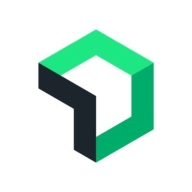

New Relic and Sentry compete in the monitoring tools category. New Relic seems to have the upper hand due to its robust features and comprehensive support, whereas Sentry is valued for its simplicity and efficiency.
Features: New Relic includes extensive data analytics, custom dashboards, and deep transaction insights. Sentry provides real-time error tracking, efficient issue resolution, and integration capabilities.
Room for Improvement: New Relic has high complexity and a steep learning curve. Sentry can improve on performance for large-scale operations and more detailed documentation.
Ease of Deployment and Customer Service: New Relic's deployment is comprehensive but complex, with supportive customer service. Sentry's deployment is straightforward, but users desire more robust support.
Pricing and ROI: New Relic has higher setup costs but offers justified ROI due to its features. Sentry has a more cost-effective setup with satisfactory ROI, focusing on error tracking.
There is return on investment because since we reduced the downtime, we can definitely save a lot of money within that period.
There is a definite return on investment for New Relic, as we would not have invested in building its infrastructure if there were no returns.
One of the metrics that helped as a return on investment was the ability to detect issues faster and troubleshoot more quickly, which in turn helped to achieve a much better service level agreement with customers.
If I drop an email to them, they will respond quickly to my email.
Customer support from New Relic is very good, and we rarely need to create support tickets.
Issues that could be solved quickly sometimes take longer because they go around in circles.
We have not contacted their technical support because everything is easy to set up under Sentry.
We currently use New Relic for tens of thousands of developers and hundreds of teams within our organization, and we have not encountered any scalability issues.
It has been easy to use and configure across multiple systems, each having several environments.
If they could improve the customer support by reducing their SLA within three to five days, if they could remediate everything, that will be so much helpful.
Using real-time data, if there are any malicious patterns or something happening, they can identify those.
Because of the pricing model, organizations have experienced uncontrolled costs and were not able to afford New Relic.
Integrations or single sign-on capability with Microsoft would be beneficial for securing all assets.
Considering the features New Relic offers, the pricing or cost setup has not been a blocker for our budget.
Compared to New Relic, it provides the necessary features at a cheaper cost, especially since we moved infrastructure monitoring to Azure.
Using New Relic speeds up troubleshooting and resolution, giving us a clearer picture of where issues are, thus saving time and effort.
New Relic is very useful for teams that don't have much of a dedicated DevOps team but want to have observability for their platform, and it's an easy way to get started.
New Relic has positively impacted our organization by reducing errors, improving performance, and saving time.
Real-time error tracking helps our Quality Assurance team easily identify the root causes of problems or bugs and promptly inform the developers about specific issues.
At this time, I focus on finding and fixing bugs.
Sentry provides real-time error tracking which is invaluable for identifying and resolving issues quickly.
| Product | Market Share (%) |
|---|---|
| New Relic | 4.1% |
| Sentry | 3.8% |
| Other | 92.1% |

| Company Size | Count |
|---|---|
| Small Business | 65 |
| Midsize Enterprise | 50 |
| Large Enterprise | 65 |
| Company Size | Count |
|---|---|
| Small Business | 7 |
| Midsize Enterprise | 3 |
| Large Enterprise | 3 |
New Relic offers real-time application monitoring and insight into performance bottlenecks. Its customizable dashboards and APM integration provide efficient operational support, while server performance alerts ensure quick issue detection.
New Relic provides comprehensive monitoring of application performance, tracking bottlenecks across databases and front-end components. Users employ it for server and infrastructure monitoring, as well as analyzing key metrics such as CPU and memory usage. The solution's ability to integrate with tools like PagerDuty enhances incident management capabilities. However, users have expressed a need for improvements in query language simplicity, more detailed historical insights, and better mobile app monitoring support.
What are New Relic's most important features?In industries like e-commerce and financial services, New Relic supports application performance monitoring to enhance user experience and system reliability. Organizations leverage its insights for optimizing performance, particularly in server operations and infrastructure management. Its ability to monitor API failures through synthetic monitoring is crucial for maintaining high service levels.
Sentry is a robust error management system known for real-time error tracking and integration with tools like Slack, GitLab, and Jira, benefiting those seeking comprehensive application performance insights.
Sentry offers a seamless platform to monitor errors in both front-end and back-end applications, providing real-time alerts and comprehensive event log context. With its integration capabilities, teams effectively track application metrics and access performance data without direct production access, ensuring enhanced reliability. Sentry's features such as event grouping and code trace logs linked to Git repositories highlight its utility in maintaining application efficiency. Enhanced security and regular updates make it a preferred choice over competitors. Despite some requests for improvements in automation and UI enhancements, Sentry remains invaluable for error management and application performance monitoring.
What are the key features of Sentry?In industries like technology, Sentry is crucial for monitoring errors in web applications, offering real-time alerts and performance tracking. It is frequently used in ETL processes to detect failures without direct developer access, benefiting teams who manage large-scale applications and databases efficiently.
We monitor all Application Performance Monitoring (APM) and Observability reviews to prevent fraudulent reviews and keep review quality high. We do not post reviews by company employees or direct competitors. We validate each review for authenticity via cross-reference with LinkedIn, and personal follow-up with the reviewer when necessary.